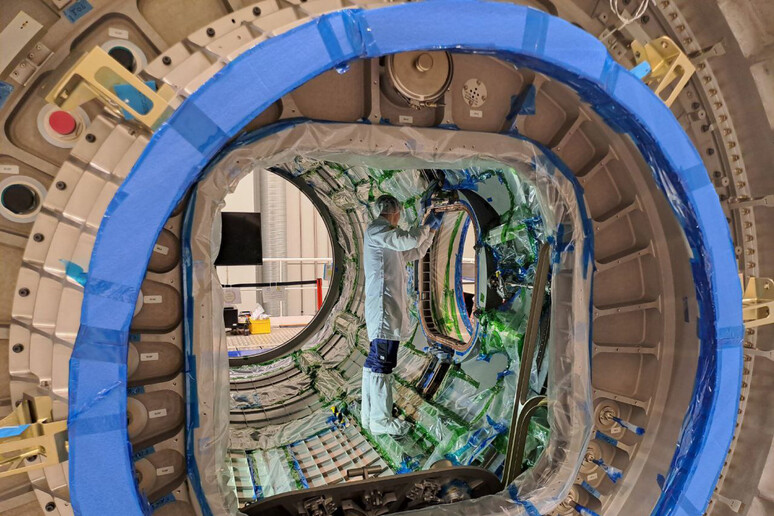The heart of NASA's future space
station as a transit post to take astronauts back to the Moon
has been made in Italy.
The pressurized module HALO (Habitation And Logistics Outpost)
was built in the Thales Alenia Space (Thales - Leonardo) factory
in Turin.
The module is ready to leave for the United States at the end of
March where the company Northrop Grumman will complete the
internal setup.
The launch is scheduled for the end of 2027, Walter Cugno, vice
president for Exploration and Science of Thales Alenia Space,
told ANSA.
It is another fundamental step in the Artemis program, promoted
by NASA to bring astronauts back to the Moon and to which dozens
of countries and space agencies are adhering, including the
European Space Agency and the Italian Space Agency.
HALO will become the first nucleus of the Gateway space station,
in which astronauts destined for lunar missions will be able to
live and work.
Its expected operational life is 15 years and all the other
Gateway components will be attached to it.
For Jon Olansen, head of the Gateway program for NASA, who took
part in the Turin presentation, HALO and the future space
station in lunar orbit are destined to become the outpost of
future space exploration, in particular of missions directed to
Mars.
Giampiero Di Paolo, CEO of Thales Alenia Space Italia, said "I
am truly proud to celebrate this moment that marks a decisive
step forward in the construction of the Gateway cislunar orbit
station and that underlines the strategic importance of
international cooperation in this new era of space exploration.
"Our company, thanks to its consolidated experience in the
development of space infrastructures and exploration vehicles,
in line with the visions of the European and Italian agencies,
is using all its capabilities to expand knowledge and push
beyond the boundaries of cislunar exploration.
"Our goal is, in fact, to work with the space community to
contribute to lunar exploration and to a continuous presence on
the lunar surface, looking beyond".
"The Gateway space station destined for lunar orbit will in fact
be a starting point for future human missions in deep space,
including those directed to Mars.
"To this end, we continuously invest in new technological
developments and promote innovation. These are the challenges
that respond to our natural vocation, a stimulus for us and for
our supply chain for the benefit of the entire space ecosystem".
ALL RIGHTS RESERVED © Copyright ANSA











